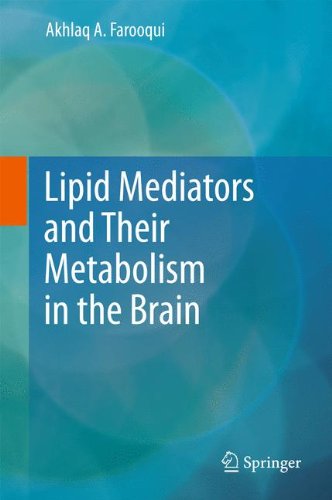

Most ebook files are in PDF format, so you can easily read them using various software such as Foxit Reader or directly on the Google Chrome browser.
Some ebook files are released by publishers in other formats such as .awz, .mobi, .epub, .fb2, etc. You may need to install specific software to read these formats on mobile/PC, such as Calibre.
Please read the tutorial at this link: https://ebookbell.com/faq
We offer FREE conversion to the popular formats you request; however, this may take some time. Therefore, right after payment, please email us, and we will try to provide the service as quickly as possible.
For some exceptional file formats or broken links (if any), please refrain from opening any disputes. Instead, email us first, and we will try to assist within a maximum of 6 hours.
EbookBell Team

0.0
0 reviewsLipid mediators are chemical messengers that are formed in response to cell stimulation or injury from membrane phospholipids, sphingolipid, and cholesterol. They play important roles in internal and external communication and modulate cellular responses such as the growth arrest, differentiation, adhesion, and migration. Lipid mediators of arachidonic acid (ARA) metabolism include prostaglandins, leukotrienes, thromboxanes, lipoxins, whereas lipid mediators of docosahexaenoic acid (DHA) metabolism are resolvins, protectins, neuroprotectins, and maresins. The non-enzymic lipid mediators of ARA and DHA metabolism include isoprostanes, neuroprostanes, isoketals, neuroketals, isofurans, neurofurans, 4-hydroxynonenal, and 4-hydroxyhexanal. Ceramide, ceramide 1-phosphate, sphingosine, and sphingosine 1-phosphate are lipid mediators of sphingolipid metabolism. These mediators are closely associated with apoptotic cell death, cell proliferation, cell migration, and survival. Cholesterol-derived mediators include 24-hydroxycholesterol, 25-hydroxycholesterol, 27-hydroxycholesterol, and 22-hydroxycholesterol. These mediators act as ligands of liver X receptors, transcription factors with key roles in lipid metabolism. Under normal conditions, low levels of lipid mediators are needed for signal transduction, gene expression, and neural cell proliferation and differentiation, but high levels of enzymic and non-enzymic lipid mediators of glycerophospholipid, sphingolipid, and cholesterol
metabolism produce neurodegeneration through the induction of oxidative stress, neuroinflammation and synaptic dysfunction.
Lipid Mediators and Their Metabolism in the Brain presents readers with cutting edge and comprehensive information not only on the synthesis and degradation of glycerophospholipid-, sphingolipid-, and cholesterol-derived lipid mediators, but also their involvement in neurological disorders. It is hoped that this monograph will be useful not only to postgraduate student and their teachers, but also to research scientists and physicians, who are curious about the generation and roles of lipid mediators in the brain.